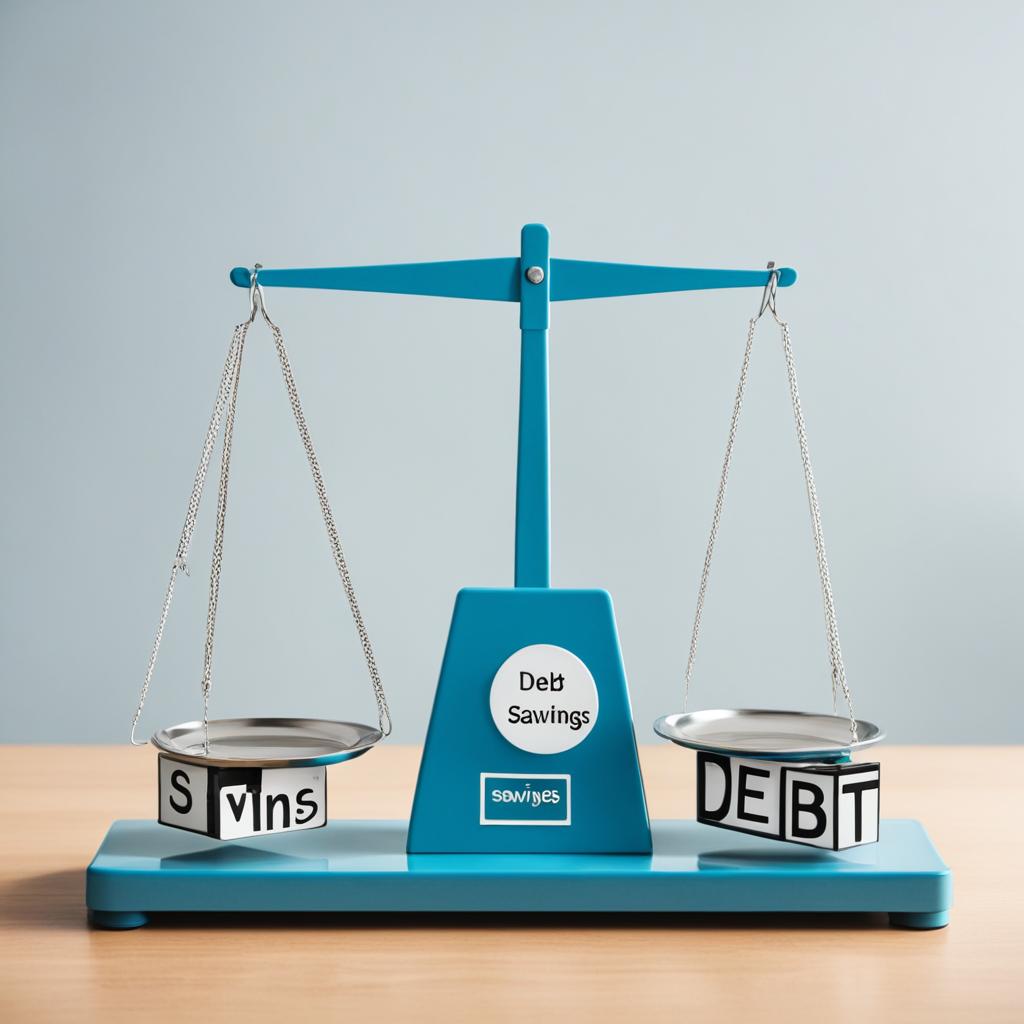In today’s world, with the rising inflation and increasing financial responsibilities, it’s more crucial than ever to find effective ways to save money. Whether you’re looking to achieve your financial goals, build an emergency fund, or simply reduce unnecessary expenses, this comprehensive guide will provide you with the strategies and tips you need to spend less and save more.
Understanding your income and expenses, reducing your expenses, increasing your income, automating your savings, managing your debt, building an emergency fund, and investing in your future are the key steps to take control of your finances and achieve financial success.
Key Takeaways:
- Track your income and expenses to gain a clear understanding of your financial situation.
- Identify and cut back on unnecessary expenses to reduce your spending.
- Explore additional sources of income to boost your savings.
- Automate your savings to develop a consistent savings habit.
- Effectively manage your debt to free up more money for saving.
By following these budgeting strategies and implementing the tips provided in this guide, you’ll be well on your way to spending less money and achieving your financial goals. With a little discipline and determination, you can pave the way to a more secure and financially stable future.
Understand Your Income and Expenses
To effectively manage your finances and save money, it’s crucial to have a clear understanding of your income and expenses. By analyzing your cash flow and tracking your financial activity, you’ll gain valuable insights that can help you make informed decisions and achieve your financial goals.
Net Income: Calculating Your True Earnings
The first step in understanding your income is to determine your net income, which is your total earnings after deducting taxes and other deductions. Net income is the amount of money you actually have available to cover your expenses and save. By comprehending your net income, you’ll have a realistic understanding of your financial situation and can plan your budget accordingly.
Tracking Expenses: The Key to Financial Awareness
To gain a comprehensive understanding of your expenses, it’s essential to track all your financial transactions. Start by categorizing your expenses into major categories such as housing, food, transportation, and smaller discretionary expenses like dining out or subscription services.
List of Major Expense Categories:
| Expense Category | Description |
|---|---|
| Housing | Includes rent/mortgage, utilities, and home maintenance |
| Food | Covers groceries, dining out, and delivery/takeout |
| Transportation | Includes car payments, gas, insurance, and public transportation costs |
| Discretionary Expenses | Covers non-essential expenses like entertainment, hobbies, and subscriptions |
Tracking your expenses diligently allows you to identify areas where you can cut back and save money. It also helps you recognize spending patterns and make more informed decisions regarding your finances.
Financial Snapshot: Analyzing Income and Expenses
By aligning your income and expenses, you can create a financial snapshot that provides a clear picture of your overall financial health. This snapshot enables you to assess whether your expenses are within your income limits, identify areas of overspending, and make adjustments to improve your financial well-being.
Here’s an example of a simple financial snapshot:
| Category | Monthly Income | Monthly Expenses |
|---|---|---|
| Net Income | $4,000 | |
| Housing | $1,200 | |
| Food | $500 | |
| Transportation | $300 | |
| Discretionary Expenses | $400 | |
| Total | $4,000 | $2,400 |
| Savings | $1,600 |
In the example above, the monthly expenses amount to $2,400, leaving a savings amount of $1,600 from the net income of $4,000. Analyzing this snapshot helps you identify the percentage of your income that goes towards essential expenses compared to savings.
I always remind myself to track my income and expenses regularly to stay aware of my financial position. It’s incredible how analyzing the numbers can provide valuable insights and help me make better financial decisions. By knowing my cash flow, I can prioritize my spending and save for the things that truly matter to me.
Reduce Your Expenses
To spend less money, it’s important to take a close look at your expenses and find ways to reduce them. By identifying discretionary and non-discretionary expenses and prioritizing your needs over wants, you can make significant progress in cutting down your spending.
Start by tracking your expenses and categorizing them into discretionary and non-discretionary. Discretionary expenses are those that you have more control over, such as dining out, entertainment, or shopping for non-essential items. Non-discretionary expenses, on the other hand, are essential costs like housing, utilities, and groceries.
Once you have categorized your expenses, it’s time to focus on reducing the discretionary ones. Evaluate each expense and determine whether it is a want or a need. Wants are those that bring you enjoyment but are not necessary for your basic needs. Needs, on the other hand, are essential for your well-being and survival.
Prioritize reducing your wants and cutting back on unnecessary spending. For example, instead of dining out multiple times a week, consider cooking at home and packing your lunch. Brew your own coffee instead of buying it every day. These small changes can add up to significant savings over time.
| Expense Category | Example | Wants vs. Needs | Cost-saving Strategies |
|---|---|---|---|
| Food | Eating out at restaurants | Want | Limit eating out, cook at home, pack lunch |
| Entertainment | Concert tickets | Want | Find free or low-cost entertainment options, use discounts or coupons |
| Shopping | New clothes | Want | Shop during sales, buy second-hand, borrow or exchange clothes |
Remember, reducing your expenses doesn’t mean depriving yourself of everything you enjoy. It’s about making thoughtful choices and finding alternatives that align with your financial goals. By cutting back on discretionary spending and prioritizing your needs, you can save money and achieve financial stability.
Put the extra savings into a high-interest savings account to make your money work harder for you. With time, you’ll not only see your expenses decrease but your savings increase, bringing you closer to your financial aspirations.

Increase Your Income
If you want to have more money to save, it’s essential to find ways to increase your income. Here are some effective strategies to consider:
1. Explore Side Hustles:
Take advantage of the gig economy by exploring side hustles that align with your skills and interests. Whether it’s dog walking, catering, or offering freelance services, these opportunities can provide an additional stream of income.
2. Take Up Gig Work:
Consider joining platforms like Uber or DoorDash, where you can earn money by providing services on a flexible schedule. These gig-based jobs allow you to leverage your own assets, such as your car or bicycle, to generate income.
3. Look for Part-time Jobs:
Search for part-time jobs that fit your schedule and complement your primary source of income. It can be an excellent way to earn extra money without committing to a full-time position.
4. Offer Freelance Services:
If you have marketable skills, consider offering freelance services in your area of expertise. Websites like Upwork or Fiverr provide platforms where you can showcase your talents and connect with potential clients.
5. Negotiate Your Salary:
Don’t be afraid to negotiate your salary, especially when starting or switching jobs. Research the market value for your role and industry and use that information to make a compelling case for a higher salary.
Increasing your income through these strategies will not only give you more financial flexibility but also provide the opportunity to save more for your future goals.
Featured Quote
“By diversifying my income through side hustles and part-time jobs, I was able to increase my savings and achieve greater financial stability.” – Jane Thompson
Comparison of Different Side Hustles
| Side Hustle | Time Commitment | Earning Potential | Key Skills Required |
|---|---|---|---|
| Dog walking | Flexible | $$ | Love for animals, physical fitness |
| Catering | Event-based | $$$ | Cooking, organization |
| Freelance writing | Varies | $$ | Excellent writing skills, subject expertise |
| Uber/DoorDash | Flexible | $$$ | Valid driver’s license, reliable transportation |
Automate Your Savings
Automating your savings is a game-changer when it comes to building a strong financial future. By setting up automatic transfers from your checking account to a high-interest savings account, you can effortlessly grow your savings without even thinking about it.
Take the first step towards building a savings habit by choosing a high-interest savings account that offers competitive interest rates. This way, your money will work harder for you, maximizing your returns and helping you reach your financial goals faster.
But why stop there? Consider automating your retirement savings as well. Most employers offer automatic payroll deductions, allowing you to contribute a percentage of your income directly into your retirement account. And if your employer offers matching contributions, take full advantage of this free money.
Benefits of Automating Your Savings
| Benefits | Explanation |
|---|---|
| Consistency | Automating your savings ensures a regular and consistent contribution, helping you develop a savings habit. |
| Effortless Saving | With automatic transfers, you don’t have to remember or worry about setting aside money manually. It happens automatically. |
| Maximize Returns | By choosing a high-interest savings account, you can earn more on your savings and make the most out of your hard-earned money. |
| Time-Saving | Automating your savings frees up your time and mental energy, allowing you to focus on other important aspects of your life. |
By automating your savings, you’ll effortlessly grow your nest egg and build a financially secure future. Keep in mind that regular evaluations of your savings plan are crucial to ensure you stay on track and make any necessary adjustments along the way.

Manage Your Debt
Dealing with high-interest debt can be a major roadblock in your journey to financial stability. It’s crucial to prioritize managing your debt so that you can free up more money for saving and investing. One common form of high-interest debt is credit card debt, which can quickly accumulate if not managed properly.
When it comes to credit card debt, it’s essential to focus on paying off balances with the highest interest rates first. By doing so, you can minimize the amount of interest that accrues and save yourself from getting caught in a never-ending cycle of debt.
Many people fall into the trap of making only the minimum payments on their credit cards. While this may provide immediate relief, it’s a strategy that keeps you locked in a cycle of interest payments. Instead, strive to pay more than the minimum required amount each month to make a significant dent in your debt.
If you find yourself juggling multiple debts with high interest rates, consider debt consolidation as an option. Debt consolidation involves combining all your debts into a single loan with a lower interest rate. This can make it easier to manage your debt and potentially save money on interest payments.
Benefits of Managing Your Debt
“Paying off high-interest debt allows you to redirect your money towards savings and investments, helping you to achieve your long-term financial goals.”
By actively managing your debt, you create more room in your budget to save, invest, and build wealth over time. As you reduce your debt burden, you’ll also improve your credit score, which can open up better opportunities for future borrowing and financial stability. A responsible approach to debt management sets you on the path towards achieving your financial goals and securing a brighter future.

| Types of Debt | Interest Rates |
|---|---|
| Credit Card Debt | High |
| Student Loans | Varies |
| Mortgages | Low |
| Car Loans | Varies |
| Personal Loans | Varies |
- High-interest debt, such as credit card balances, should be a priority for repayment.
- Paying more than the minimum on your credit cards helps you break free from the cycle of debt.
- Debt consolidation can be a useful strategy for managing multiple high-interest debts.
With a clear plan, effective debt management can have a profound impact on your financial well-being. By putting in the effort to pay off high-interest debt, you can take control of your finances and pave the way towards a debt-free future.
Build an Emergency Fund
When it comes to financial stability, one of the most important steps you can take is to build an emergency fund. An emergency fund acts as a safety net, providing you with the necessary funds to cover unexpected expenses, such as job loss or medical emergencies. It ensures that you won’t have to rely on credit cards or loans when faced with unforeseen circumstances.
As a rule of thumb, aim to save at least three to six months’ worth of living expenses in your emergency fund. This amount will provide you with a comfortable cushion to fall back on during difficult times. If you’re just starting out, don’t be discouraged. Begin by setting aside a smaller emergency fund of at least $500, and gradually increase it over time.
It’s important to treat your emergency fund as untouchable unless a true emergency arises. Avoid dipping into it for unnecessary expenses or non-emergency situations. By maintaining the integrity of your emergency fund, you’ll be better prepared to handle unexpected financial challenges without falling into debt.
“An emergency fund is like a financial safety net – it gives you peace of mind and protects you from the stress of unexpected expenses.” – Emma Green
Having an emergency fund not only provides financial security but also brings peace of mind. Knowing that you have a financial cushion in place to handle unexpected expenses can significantly reduce stress and anxiety. It’s an essential component of a well-rounded financial plan and contributes to your overall financial well-being.
Building an emergency fund requires discipline and commitment. Start by setting a realistic savings goal and consistently contribute to it. Consider automating your savings by setting up automatic transfers from your checking account to your emergency fund. This way, you’ll be building your fund effortlessly.
Remember, financial stability is a journey, and building an emergency fund is a crucial step along the way. By prioritizing saving for unexpected expenses, you’ll be better prepared to weather any financial storm that comes your way.

Invest in Your Future
Planning for retirement is a critical step in securing your financial future and achieving long-term financial stability. By strategically saving and investing your money, you can ensure a comfortable retirement that allows you to enjoy the fruits of your labor. Here are some key strategies to consider:
Contribute to Your Retirement Savings
One of the most effective ways to build your retirement savings is to contribute regularly to retirement accounts such as a 401(k) plan or an Individual Retirement Account (IRA). Aim to contribute at least 15% of your income towards retirement savings, but any amount is better than nothing. By consistently saving, you can take advantage of the power of compound interest, which allows your money to grow over time.
Take Advantage of Employer Matches
If your employer offers a 401(k) plan with matching contributions, make sure you take full advantage of this benefit. Employer matches are essentially “free money” that can significantly boost your retirement savings. Contribute enough to your 401(k) plan to receive the maximum matching contribution from your employer. It’s a valuable opportunity to accelerate your retirement savings without any additional effort on your part.
Consider Opening a Roth IRA
In addition to your 401(k) or traditional IRA, consider opening a Roth IRA to diversify your retirement savings. Contributions to a Roth IRA are made with after-tax dollars, meaning your withdrawals during retirement will be tax-free. This can be especially advantageous if you anticipate being in a higher tax bracket during retirement. Consult with a financial advisor to determine the best retirement savings vehicles for your specific needs.
The Power of Compound Interest
Compound interest is a powerful force that can significantly boost your retirement savings. By starting to save early and consistently contributing to your retirement accounts, your money will have more time to grow and benefit from compounding. Compound interest allows your investment returns to generate even more returns, creating a snowball effect. The earlier you start, the more time you have for your investments to compound and grow.
Remember, investing in your future is crucial for a secure retirement. By making retirement savings a priority and taking advantage of investment opportunities, you can build a nest egg that will support you throughout your golden years.
| Retirement Savings Tips: | Key Benefits: |
|---|---|
| Contribute regularly to retirement accounts | Build a substantial retirement fund over time |
| Take advantage of employer matches | Maximize your retirement savings with additional contributions |
| Consider opening a Roth IRA | Generate tax-free income during retirement |
| Harness the power of compound interest | Watch your retirement savings grow exponentially over time |
Set Financial Goals and Stick to Them
Setting and achieving financial goals is a key component of successful money management. By establishing clear objectives and diligently tracking your progress, you can stay on top of your finances and achieve the financial stability you desire.
To begin, take some time to reflect on your short-term and long-term financial aspirations. Whether it’s saving for a down payment on a house, paying off student loans, or building a retirement nest egg, having specific and measurable goals will provide you with a sense of direction.
Once you have defined your financial goals, it’s essential to have a budgeting system in place to track your income and expenses. Budgeting apps like Mint or Empower can be valuable tools to help you stay organized and monitor your financial activities.
Regularly evaluating your budget is crucial to ensure that you are staying on track towards achieving your financial goals. Review your expenses and income regularly to identify areas where you can save more or make adjustments. By making small changes to your spending habits, you can free up more money to put towards your goals.
Resisting the temptation to overspend is vital on your journey to achieving financial success. Stay committed to your goals and maintain discipline when making financial decisions. Remember that every purchase you make should align with your long-term objectives.
By setting financial goals, tracking your progress, and consistently evaluating your budget, you’ll develop strong financial habits that will lead you to financial success.
Benefits of Setting Financial Goals
Setting financial goals provides several benefits that contribute to your overall financial well-being:
- Focus and Motivation: Having clear goals helps you stay focused and motivated to make financial decisions that align with your objectives.
- Direction: Goals provide you with a sense of direction and purpose in your financial journey.
- Financial Awareness: Tracking your progress towards your goals increases your overall financial awareness and understanding of your financial situation.
- Measure of Success: Achieving your financial goals is a tangible measure of your financial success and can provide a great sense of accomplishment.
By setting financial goals and staying committed to them, you’ll be well on your way to achieving financial stability and securing your future.
“A goal without a plan is just a wish.” – Antoine de Saint-Exupéry
Tracking Your Financial Progress
Tracking your financial progress is a crucial step in achieving your goals. Here are some strategies to help you effectively track your journey:
- Use budgeting apps or spreadsheets to record your income, expenses, and savings. This will help you visualize your progress over time.
- Regularly review your budget and assess your spending to identify areas where you can cut back or optimize.
- Set milestones along the way to keep yourself motivated and celebrate small wins as you progress towards your larger financial goals.
- Seek accountability from a trusted friend or family member who can provide support and help you stay on track.
Remember, tracking your financial progress is not just about reaching your goals; it’s also about gaining valuable insights into your financial habits and making adjustments to improve your financial well-being.
Budget Evaluation and Adjustments
Regularly evaluating your budget and making necessary adjustments is an essential part of the goal-setting process. By assessing your expenses, income, and overall financial situation, you can ensure that your budget remains aligned with your goals.
Here are some steps to help you evaluate and adjust your budget:
- Review your monthly expenses and assess if any changes or unexpected costs have occurred.
- Analyze your spending patterns to identify areas where you can cut back without compromising your goals.
- Consider changes in your income and adjust your budget accordingly to ensure it remains realistic.
- Revisit your financial goals periodically to determine if they need to be modified or if new goals should be added.
By regularly evaluating and adjusting your budget, you’ll have greater control over your financial situation and increase your chances of achieving your goals.
Remember, maintaining a budget and tracking your progress towards your financial goals is an ongoing process. It’s important to stay committed and have the flexibility to adapt your budget as circumstances change.
| Benefits of Setting Financial Goals | Tracking Your Financial Progress | Budget Evaluation and Adjustments |
|---|---|---|
| Focus and Motivation | Use budgeting apps or spreadsheets | Review your monthly expenses |
| Direction | Regularly review your budget | Analyze your spending patterns |
| Financial Awareness | Set milestones along the way | Consider changes in your income |
| Measure of Success | Seek accountability from a trusted friend | Revisit your financial goals periodically |
Weight Your Needs and Wants
When it comes to spending money wisely, it’s crucial to differentiate between your needs and wants. By understanding the difference and making responsible spending decisions, you can prioritize your financial well-being and achieve your long-term goals.
Needs: Your needs encompass essential expenses that are necessary for your survival and basic well-being. These include housing, food, utilities, healthcare, and transportation. Meeting these needs should be your top priority, as they are crucial for maintaining a stable and comfortable lifestyle.
Wants: Wants, on the other hand, are non-essential expenses that bring you pleasure or enjoyment but are not necessary for your survival. Examples of wants include eating out at restaurants, buying the latest gadgets, going on vacations, or indulging in entertainment activities.
It’s important to strike a balance between your needs and wants, ensuring that you have enough room in your budget for both. Here are some strategies to help you prioritize your spending:
1. Create a Budget
Start by creating a detailed budget that outlines your income and expenses. This will give you a clear overview of your financial situation and help you determine how much you can allocate towards your needs and wants.
2. Prioritize Your Needs
Allocate a significant portion of your budget towards fulfilling your needs. Make sure you have enough money set aside for rent or mortgage payments, groceries, utilities, and transportation expenses. By taking care of your needs first, you can ensure a stable foundation for your financial well-being.
3. Set Limits for Your Wants
While it’s important to enjoy life and indulge in your wants, it’s equally crucial to set limits and make thoughtful spending choices. Consider establishing a discretionary spending limit each month for activities like dining out, entertainment, or shopping. This will help you avoid impulsive purchases and prioritize your wants within a responsible framework.
4. Find Creative Alternatives
If you find that your wants exceed your budget, look for creative alternatives that can help you indulge in your desires without breaking the bank. For example, instead of dining out at expensive restaurants, consider cooking at home and hosting a potluck with friends. Look for free or low-cost entertainment options in your community, such as local events, parks, or museums.
5. Regularly Evaluate Your Spending Choices
Periodically review your spending choices and evaluate whether they align with your financial goals. Reflect on whether certain wants are worth the financial sacrifice or if there are more cost-effective alternatives available. By regularly evaluating your spending choices, you can make adjustments and ensure responsible financial behavior.
Remember, responsible spending means prioritizing your needs while still allowing yourself some room for wants. By balancing these two aspects, you can save money, achieve your financial objectives, and live a fulfilling life within your means.
| Needs | Wants |
|---|---|
| Housing | Dining out |
| Food | Entertainment |
| Utilities | Shopping |
| Healthcare | Vacations |
| Transportation | Luxury items |
Leverage Cost-Cutting Techniques
To save more money and adopt a frugal living approach, it’s important to implement effective cost-cutting techniques. By making smart financial decisions and being intentional with your spending, you can significantly reduce expenses and improve your financial situation. Here are some practical strategies to help you achieve your goals:
1. Reduce Housing Costs: Consider downsizing to a smaller home or apartment that better suits your needs and budget. If feasible, explore roommates or house-sharing arrangements to split expenses.
2. Optimize Transportation: Look for ways to reduce commuting costs by carpooling with colleagues or utilizing public transportation. Consider biking or walking for shorter distances, not only saving money but also benefiting your health.
3. Shop Sensibly for Food: Plan your meals in advance to avoid unnecessary food waste. Take advantage of local farmer’s markets or discount stores for affordable produce. Consider buying generic brands or bulk items to save on groceries.
4. Negotiate Bills: Contact your service providers (e.g., cable, internet, insurance) to negotiate better rates or explore alternative options that may offer better value for your money.
5. Utilize Coupons and Seasonal Sales: Browse newspapers, online platforms, or store apps for coupons and discounts. Take advantage of seasonal sales, such as Black Friday or Cyber Monday, to save even more on big-ticket items.
6. Implement a 30-day Rule for Major Purchases: Before making a significant purchase, wait for 30 days to evaluate if it’s a necessary expense. This helps eliminate impulse buying and ensures you’re making a smart financial decision.
7. Consider Frugal Alternatives: Explore alternatives for expensive recreational activities or hobbies. Look for free or low-cost entertainment options in your community or online.
8. Create a Budget: Develop a comprehensive budget that reflects your income, expenses, and financial goals. Regularly evaluate your spending habits to identify areas where you can make further cost-cutting adjustments.
| Cost-Cutting Technique | Benefit |
|---|---|
| Reducing Housing Costs | Savings on rent/mortgage payments |
| Optimizing Transportation | Lower commuting expenses |
| Shopping Sensibly for Food | Reduced grocery bills |
| Negotiating Bills | Savings on monthly expenses |
| Utilizing Coupons and Seasonal Sales | Discounts on purchases |
| Implementing a 30-day Rule | Elimination of impulse buying |
| Considering Frugal Alternatives | Savings on entertainment expenses |
| Creating a Budget | Better financial planning and control |
Implementing these cost-cutting techniques will help you live frugally, make smart financial decisions, and achieve your financial goals. By being proactive with your money and prioritizing frugality, you’ll be able to save significant amounts over time.
Plan for an Uncertain Future
In today’s unpredictable world, it’s crucial to be financially prepared for any unexpected events that may arise. By proactively planning for an uncertain future, you can build financial resilience and ensure that you have the necessary resources to overcome challenges.
One of the key components of financial preparedness is having an emergency fund. This fund acts as a safety net, providing you with the financial stability needed to handle unexpected expenses, such as medical bills or job loss. Aim to save at least three to six months’ worth of living expenses in your emergency fund. Start small by setting aside $500 and gradually increase it as you work towards your savings goal.
In addition to your emergency fund, it’s important to prioritize saving for retirement. Building a retirement savings plan ensures that you have a secure financial future. Consider contributing at least 15% of your income towards retirement savings. Take advantage of employer matches in programs like a 401(k) to maximize your contributions and accelerate your retirement savings.
Continually Evaluate and Update Your Financial Plan
As circumstances change, it’s essential to regularly evaluate and update your financial plan. Review your income, expenses, and financial goals to ensure that your plan aligns with your current situation. Make adjustments as necessary to accommodate any unforeseen circumstances or changes in your long-term financial goals.
Stay on top of your debt repayment by prioritizing high-interest debts, such as credit card balances. Pay more than the minimum payment to reduce the overall interest you’ll pay over time. Consider debt consolidation options to streamline and simplify your debt repayment process.
Financial preparedness is not a one-time task but an ongoing commitment. Regularly review your financial plan, adjust accordingly, and stay focused on building a stronger financial foundation.
Putting Resilience into Practice
Developing financial resilience requires a mindset of proactive planning and responsible decision-making. Prioritize saving for emergencies, such as unexpected medical expenses or home repairs, to protect yourself from financial instability. Continuously evaluate your financial goals and make adjustments as necessary. By staying on top of your debt and prioritizing savings, you’ll be better equipped to navigate any challenges that come your way.
| Key Steps for Financial Preparedness | Benefits |
|---|---|
| Build an emergency fund | Provides financial stability during unexpected events |
| Save for retirement | Ensures a secure financial future |
| Regularly evaluate and update your financial plan | Adapts to changing circumstances and goals |
| Stay on top of debt repayment | Reduces financial burdens and increases cash flow |
Conclusion
Embarking on the journey of spending less money requires discipline, awareness, and commitment. By understanding my income and expenses, reducing unnecessary spending, increasing my income, automating savings, managing debt, building an emergency fund, and investing in my future, I can achieve financial success. It is important to stay focused on my financial goals and make smart money decisions along the way. With determination and the right strategies, I can live a frugal lifestyle and achieve my financial objectives.
Living frugally is about making intentional choices to stretch my money further and prioritize my financial well-being. By understanding my cash flow, tracking my expenses, and cutting back on discretionary spending, I can effectively reduce my expenses and save more. Simultaneously, I can explore opportunities to increase my income through side hustles, freelance work, or negotiation. By automating my savings and managing my debt, I can build a solid financial foundation and prepare for a secure future.
Building an emergency fund and investing for retirement are crucial steps in achieving long-term financial success. By setting clear financial goals, monitoring my budget, and distinguishing between needs and wants, I can make responsible spending choices. Leveraging cost-cutting techniques, such as shopping for discounts and planning purchases, can further maximize my savings. Ultimately, planning for an uncertain future and adapting my financial plan accordingly will ensure that I am prepared for any challenges that come my way.
FAQ
How can I understand my income and expenses?
To understand your income and expenses, you need to closely track and analyze them. Start by calculating your net income after taxes, and then categorize and track your expenses, including housing, food, transportation, and discretionary expenses like dining out and subscriptions. This will give you a clear picture of your financial situation and help you budget effectively.
What can I do to reduce my expenses?
To reduce expenses, start by identifying and categorizing them into discretionary and non-discretionary expenses. Focus on reducing the expenses that you have more control over, such as dining out or daily coffee runs. Cut back on unnecessary spending and consider putting the extra savings into a high-interest savings account.
How can I increase my income?
There are several ways to increase your income. You can explore side hustles like dog walking or catering, offer freelance services based on your skills, or take up gig work with platforms like Uber or DoorDash. You can also look for part-time jobs that fit your schedule or negotiate your current pay to increase your income and have more financial flexibility.
How can I automate my savings?
Automating your savings is a powerful way to save money effortlessly. Set up automatic transfers from your checking account to a high-interest savings account. Choose a savings account that offers a competitive interest rate to maximize your returns. Additionally, consider setting up automatic payroll deductions to contribute to your retirement savings, taking advantage of employer matches if available.
How can I manage my debt effectively?
Prioritize managing your debt by focusing on paying off high-interest debt first, such as credit card balances. Avoid paying only the minimum amount, as it will keep you trapped in a cycle of interest. Consider options like debt consolidation if you have multiple debts with high interest rates. By reducing your debt, you’ll have more money available for saving.
Why is building an emergency fund important?
Building an emergency fund is crucial for financial stability. Aim to save at least three to six months’ worth of living expenses in case of unexpected events like job loss or medical expenses. Start with a smaller emergency fund of at least 0 and gradually increase it over time. Treat this fund as untouchable unless a true emergency occurs. Having an emergency fund will provide peace of mind and protect you from going into debt.
How can I invest in my future?
Saving for retirement is essential to secure your financial future. Contribute to your retirement savings, aiming for at least 15% of your income. Take advantage of employer matches in your 401(k) if available. Consider opening a Roth IRA for additional retirement savings. Investing your money wisely in long-term investments will ensure a comfortable retirement by taking advantage of compound interest.
How can I set financial goals and stick to them?
Set clear financial goals for yourself and track your progress. Use budgeting apps like Mint or Empower to help you track your expenses and stay on top of your budget. Regularly evaluate your budget and make adjustments as needed. Stay committed to your goals and resist the temptation to overspend. By setting financial goals and consistently tracking your progress, you’ll be able to stay on top of your finances and achieve your objectives.
How can I differentiate between my needs and wants?
To make responsible spending decisions, differentiate between your needs and wants. Your needs include essential expenses like housing, food, and utilities. Wants are non-essential expenses like entertainment or dining out. Prioritize your needs while still allowing yourself some room for wants. Be conscious of impulse buying and make thoughtful spending choices. Balancing your needs and wants will help you save money and prioritize your financial well-being.
What cost-cutting techniques can I implement?
Implement cost-cutting techniques to save more money. Look for ways to reduce expenses in areas like housing, transportation, and food. Consider downsizing, carpooling, or shopping for cheaper alternatives. Negotiate bills and explore options for lower-cost services. Use coupons and take advantage of seasonal sales. Plan your groceries and use the 30-day rule or 24-hour rule for big purchases. By being intentional with your spending, you can save significantly.
How can I plan for an uncertain future?
Be prepared for unexpected events by planning for an uncertain future. Build financial resilience by having an emergency fund and saving for retirement. Continually evaluate and update your financial plan to adapt to changing circumstances. Stay on top of your debt repayment and prioritize saving. With a solid financial plan, you’ll be better equipped to handle any challenges that come your way.
Our Friends
- https://fortune.com/recommends/banking/how-to-save-money/
- https://www.nerdwallet.com/article/finance/how-to-budget
- https://www.creditkarma.com/money/i/saving-money
Money posts:
 Investing Your Emergency Fund
Investing Your Emergency Fund
 Retirement Financial Advisor: Types + Responsibilities (2024)
Retirement Financial Advisor: Types + Responsibilities (2024)
 Will Millennials Be Able to Retire? (2024)
Will Millennials Be Able to Retire? (2024)
 What is a Checking Account Buffer? (2024)
What is a Checking Account Buffer? (2024)
 The Financial Planning Process: A Step-by-Step Guide
The Financial Planning Process: A Step-by-Step Guide
 How To Get Rich | Steps To Take To Become Rich
How To Get Rich | Steps To Take To Become Rich
 50 Things I’ve Learned About Money
50 Things I’ve Learned About Money
 What Should I Do With My Money? (2024)
What Should I Do With My Money? (2024)

